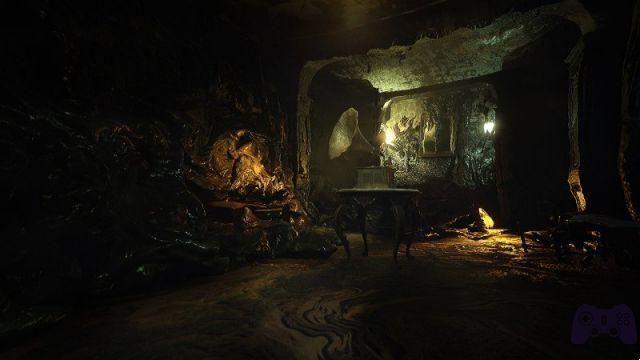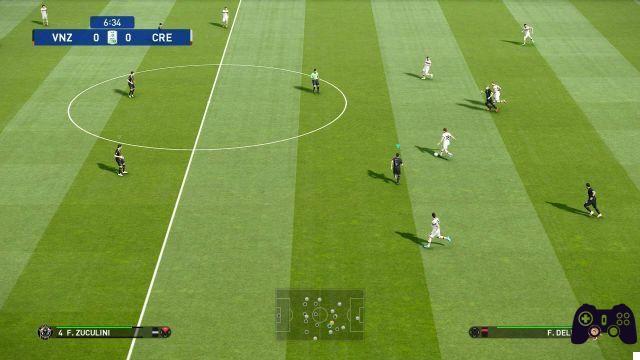The end of 2023 will be a period full of big releases, but in the midst of the games that are capturing all the attention of the general public there will also be room for Hercule Poirot: the Belgian detective will, in fact, be the protagonist of two Microids. The French publisher will publish Agatha Christie - Hercule Poirot: The London Affair and Agatha Christie - Murder on the Orient Express. Two very different works, but both dedicated to the beloved character of the novels, although in both cases reproduced in a new way.
If there is still time to discover who the murderer is on the train that connects Paris with Constantinople, the time has come to see in detail whether the promoter Blazing Griffin was able to propose once again an intriguing adventure starring the famous detective.
We say "yet" because, in case you don't know, Agatha Christie - Hercule Poirot: The London Case is the second game in the "saga", which began with The First Cases. The first chapter was an enjoyable narrative adventure with a research theme: will it be the same with this sequel? Find out in ours review of Agatha Christie - Hercule Poirot: The London Affair.
The birth of a great duo

The Blazing Media saga represents a new access point to Poirot's imagination. If in the novels our detective is already more than internationally famous, in this chapter he is only at the beginning of his upward curve. In The First Cases we saw the professional birth of Poirot, while in Agatha Christie - Hercule Poirot: The London Affair we see the rise copy Poirot - Hastings.
Hastings is Poirot's famous assistant and, in Agatha Christie - Hercule Poirot: The London Case, he is the contact agent for a job commissioned by our favorite Belgian: to bring the painting from Penitent Magdalene safely from the continent to London, where it will be displayed. The pair meet on the boat trip to England, where they immediately become involved in a small lost and found case, which serves as a tutorial and narrative introduction.
The helper is not the only new feature in this adventure, but that's for sure. the most controversial. Although his figure is not unpleasant on a narrative level, especially in the final phases, where he gains a little more depth and contrasts with Poirot's rigidity, Hastings for a good part of the game seems more like an empty puppet that our detective uses to expose the own reasoning than a true helper.
In fact, when he plays, Hastings is usually just a Interaction menu "character format" and placed at a random point in each scenario. Once we have collected enough clues we will have to go to him to explain the final reasoning related to the phase of the investigation we are carrying out. At the same time, most of the investigation is still taking place in Poirot's mind and this means that it is not always clear when the time has come to consult Hastings and when, instead, you still have to look for some clues in the environment. to continue, with The consequence is that you have to try to talk to him several times to see if his time has come or not, which makes progress more cumbersome compared to The first cases, where the investigation phase was better organized .
It's a shame Blazing Media hasn't found ways to exploit the character in a more interesting way, for example by inserting phases dedicated to him or giving him a more central role in the interrogations, which have also been weakened compared to the previous chapter, where it was necessary to convince the suspects to open up by presenting them with the appropriate clues.
Not just dialogues
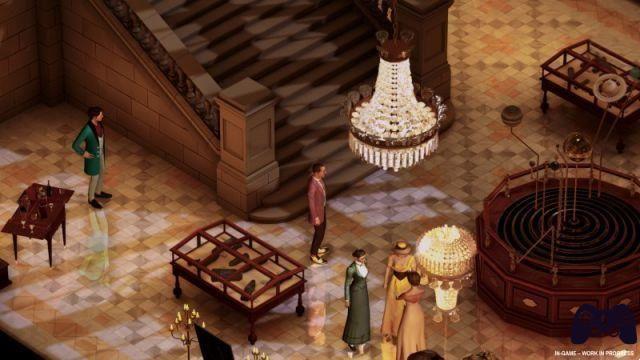
Agatha Christie - Hercule Poirot: The London Affair is not very different from the previous chapter, but it introduces some gaming news. If The First Cases relied heavily on dialogue and simple clue-gathering sections, the new game has expanded on environmental interaction, although unfortunately in an unoriginal and uninteresting way.
During the clue hunting phase, we will often have to interact with elements such as objects or small areas of interest which we will see with a first-person view (versus the top-down view of the rest of the game). It will simply be a matter of moving your gaze to each relevant detail, highlighted by the change in size of the pointer. Finally, from time to time there are safes to open (the code of which is always quite obvious) and small puzzles that require you to find the correct object to continue.
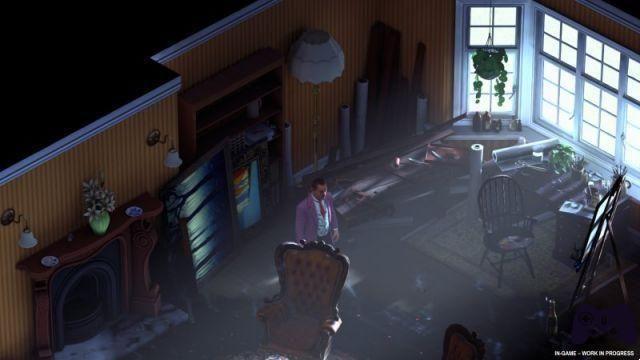
Agatha Christie - Hercule Poirot: The London Affair tries to move away from the purely narrative and adventurous structure of The First Cases by proposing something more "adventure", but the end result is a slowing down of pace and some additional hassles. The previous game was very agile and therefore fluid and pleasant, while The London Case makes us go back and forth too frequently from one place to another to find objects or complete dialogues that have been unlocked as we continue the investigations in the different places of the adventure. , which we will review again and again. Most of the time we could get the same result without having to walk back and forth to the same places over and over again.
Let's make an example that does not contain spoilers present the situation that we sometimes find ourselves facing. In one scene we had to get a cat out of its hiding place in a church. We realized we needed to find an object to complete the task, but were forced to wander randomly through various areas to find a jar of cream in the museum's restoration office. There's no logical reason why we should expect to find something like this in a place like this: the result is an entire section of gameplay that bores and frustrates. We are only talking about some extreme cases, but they cause some "lows" among very few "highs".

For the rest, If you've played the first chapter, you know what to expect.. Each relevant clue becomes an idea in Poirot's mental map and we will have to connect them to reach some conclusions. There are infinite attempts and it is always indicated how many links are still available, so you won't have to worry about being a real detective to advance.
The problem in this case is that Mind maps are small. and focus on the single event/place/character under investigation at a given time. In The First Cases almost every situation involved multiple characters and large, intriguing mental maps were created that always made it very clear who was involved and how, whereas here we proceed in small blocks. In terms of pure plot there is no difference, but in terms of presentation it is a step backwards because it repeatedly causes the sense of unity that is the basis of the story to be lost.
The London Murders
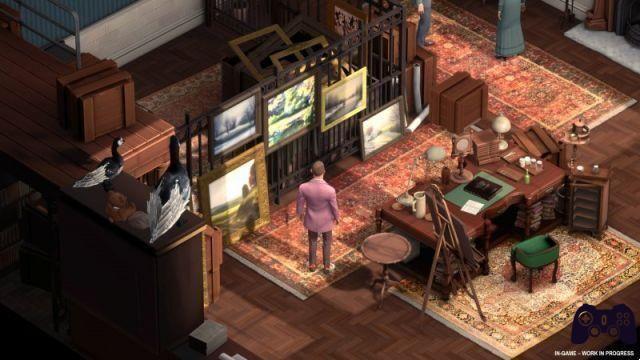
Corality, we said, because as in any good detective novel there is only one culprit, but everyone is involved in the crime. The theft of the painting is just the beginning The adventure and other facts will be revealed little by little. Several times throughout the story we had the impression that we had understood what was happening, but in most cases we were wrong due to new clues and new implications of the plot.
in every moment all the characters seem guilty but at the same time completely innocent, with the end result being an interesting plot. It's a shame that some gameplay options slow down the pace in some situations, making the experience a little more boring than The First Cases.
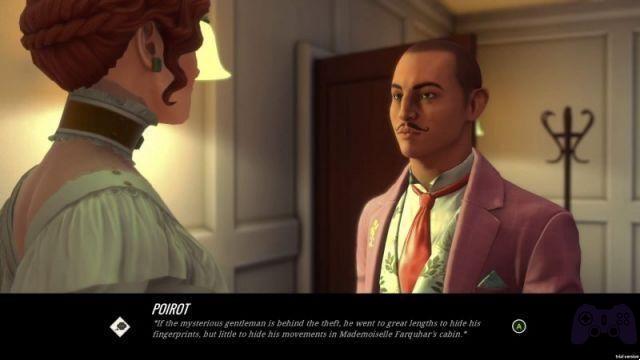
However, what did not convince us is the adjustment or rather its use. The location chosen for the case is London, but nothing iconic about the city has been exploited. The environments are mostly generic and uninteresting, such as a street, a banal church, and some interiors that could be found anywhere.
Furthermore, as already mentioned, it is often necessary re-explore the same environments both because the story takes us back to those areas, and also because we are forced to go back and forth to understand where we left something behind. Furthermore, some characters have their own area (for example an actress has her own dressing room) where it makes sense to find them, but others do not have their own space and are placed in a way that seems forced solely by recreational needs but which is not very logical. in narrative terms: finding everyone always sitting at the same table in a bar or, worse yet, finding a suspect only a step away from the crime scene creates some dissonance. In The First Cases the story was told inside a village blocked by snow and the characters' movements were always justified.
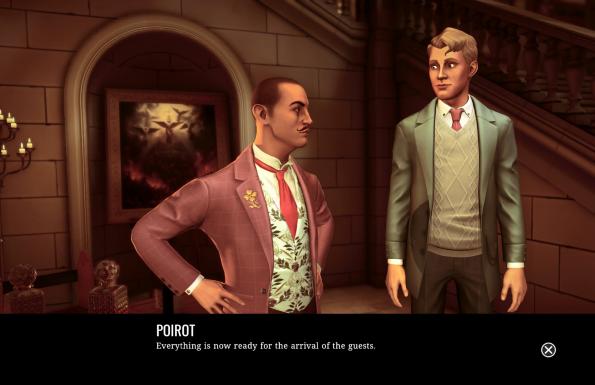
Finally, some quick comments. The dubbing is still very good and the Spanish translation has some flaws (such as rare untranslated phrases), but these are minor inaccuracies that could be corrected in time for publication. Graphically we are at the same level as The First Cases, so nothing particularly impressive, but in this case Blazing Griffin has chosen to bring the camera even closer to the faces during the dialogues: a double-edged sword, since now they are the Las Limited character animations are more evident. In The First Cases we opt for animated sprites and visually pleasing text boxes: in The London Case, on the other hand, it is a simple black block with white text and no sprites. Taking into account the limitations of 3D graphics, the final result is worse. It should also be added that the version we have tested has some problems in the transitions from one area to another and in the position of characters teleporting from a point in some cases: we hope that these small errors will be fixed at launch.
Conclusions
Tested version PC with Windows digital delivery Steam Price 39,99 € Holygamerz.com 7.0 Readers (3) 8.1 your voteAgatha Christie - Hercule Poirot: The London Case is a pleasant narrative and adventure game, but it could be improved. The biggest shame is that from several points of view it is a step backwards compared to the previous chapter, mainly due to design and presentation choices that are not always successful. The story is full of twists and there are always doubts about the innocence or guilt of all the characters, but the pace slows down too much in some phases and the setting is not entirely convincing. If you liked the previous chapter, The London Case won't disappoint, but the new features will be the least interesting part. If The First Cases wasn't for you, you're unlikely to change your mind with this game.
PRO
- Nice plot
AGAINST
- Additions derived from adventures
- Hastings could have been used better
- The graphic and technical limitations are more noticeable than in The First Cases




